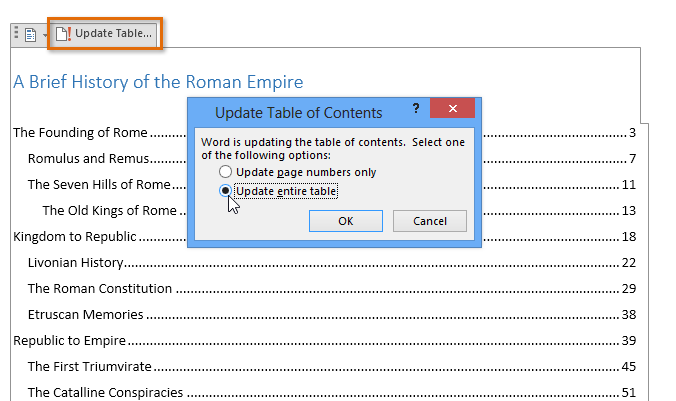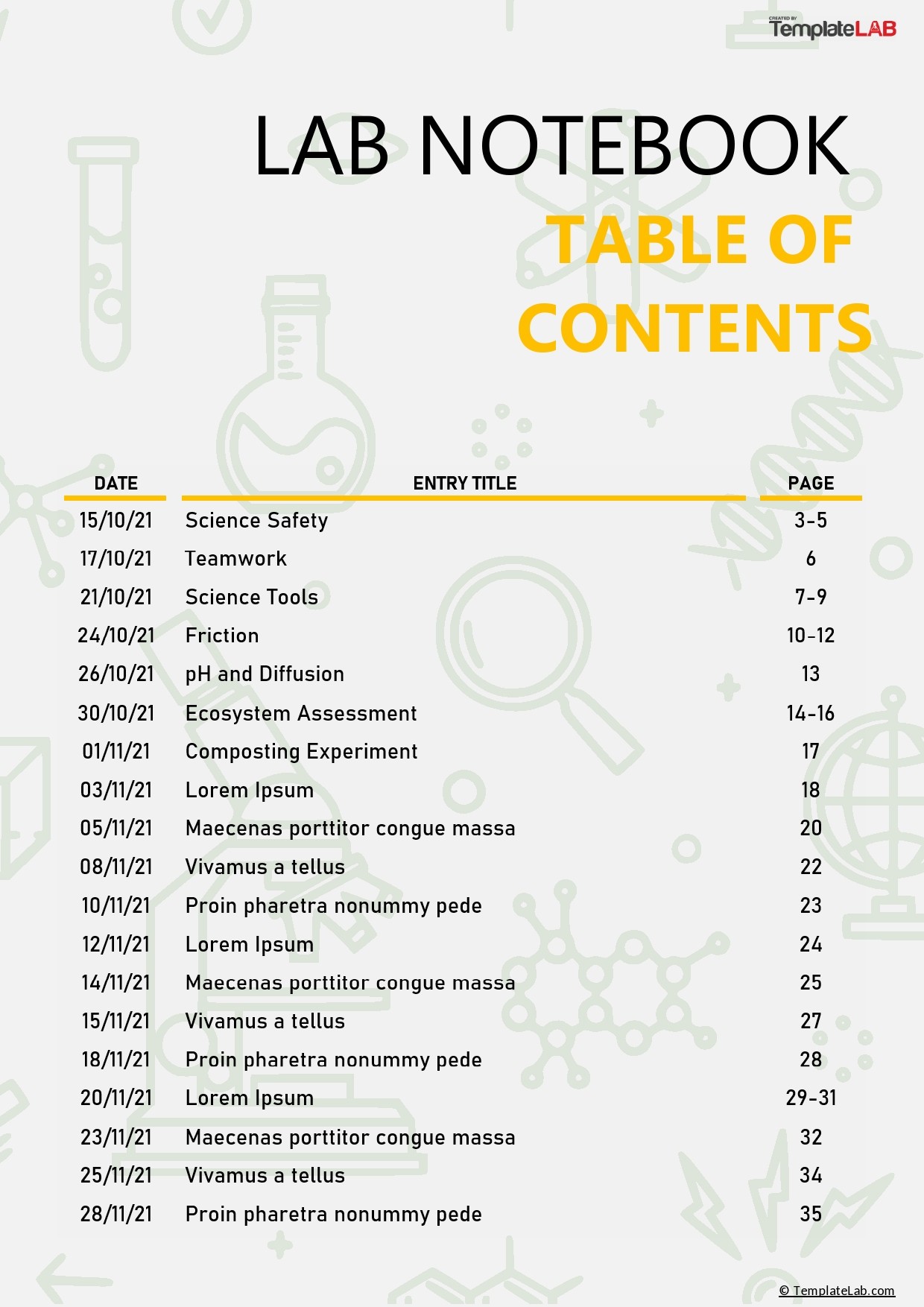
- #CREATE TABLE OF CONTENTS IN WORD MANUALLY HOW TO#
- #CREATE TABLE OF CONTENTS IN WORD MANUALLY GENERATOR#
- #CREATE TABLE OF CONTENTS IN WORD MANUALLY UPDATE#
- #CREATE TABLE OF CONTENTS IN WORD MANUALLY PRO#
Select the Options button in the Table of Contents dialog box.However, you can manually include or exclude individual heading levels within your custom table of contents.
#CREATE TABLE OF CONTENTS IN WORD MANUALLY HOW TO#
How to Choose Individual Heading Levels for a Table of Contentsīy default, Word’s tables of contents include text formatted with sequential heading styles (e.g., Heading 1, Heading 2, Heading 3, etc.). (Optional Step) Select additional options concerning page numbers and tab leaders, which are the dots, dashes, or lines that appear before the page number.įigure 8.Select the number of levels you want to include in the Show levels menu.(The From Template option is based on the styles established in your current template.) Select a visual style from the Formats menu in the Table of Contents dialog box.Select Custom Table of Contents from the drop-down menu.įigure 5.Select the Table of Contents button (see figure 2).Select the References tab in the ribbon (see figure 1).
#CREATE TABLE OF CONTENTS IN WORD MANUALLY PRO#
Pro Tip: The custom table of contents option does not automatically create a title (e.g., Table of Contents or Contents), so be sure to leave a blank line above your cursor where you can enter a title later. Word’s custom tables of contents provide formatting options and allow you to include or exclude specific heading levels. Built-in table of contents How to Create a Custom Table of Contents Your table of contents should appear in your document.

However, they offer the fewest number of customization options. Word’s built-in tables of contents are the easiest to create. Nifty! I gotta admit that I’m not the biggest fan of Word, powerful though it is, but I like this feature a lot.How to Create a Built-In Table of Contents Just remember to keep applying heading styles as necessary when you modify your document and you’ll never have to worry that your chapter titles or your page numbers won’t match the table of contents.
#CREATE TABLE OF CONTENTS IN WORD MANUALLY UPDATE#
Word will instantly update your table of contents to reflect all of the changes, including the updated page numbers for each entry. and when you’re done, just head back to the References tab and click the “Update Table” button (shown with the red arrow in the screenshot below). But here’s the great part of using this method: you can proceed to edit your document - add or remove headings, add text, change fonts and styles, etc. The table created in the steps above will list the current names of your defined headings and subheadings, along with the current page number of each. Step 3: Automatically Update Your Table of Contents Click it to reveal a drop-down list of the various ways that Word can format your table for you.Ĭlick one of the styles to choose it, and Word will automatically generate your table of contents in the location you specified. Once there, click the References tab in the toolbar.Īt the far left of the References tab you’ll see a button labeled Table of Contents. For example, you may wish to insert a new blank page at the beginning of your document ( Insert > Blank Page from the Word toolbar). Once you’ve added all of your desired headings and subheadings, place your cursor in the location where you’d like your automatically generated table of contents to appear. In your actual document, you’ll have paragraphs of text between each Chapter and Subheading. In the screenshots, the text is omitted for simplicity.

Remember, you’re applying these styles to your actual document, not to a manually created table of contents you may already have. If your document has sub-headings, select the first one and repeat the steps above, this time choosing “Heading 2.” Repeat these steps as necessary and you’ll end up with something like the screenshot below. In this case, select the desired heading style directly or click the small downward facing arrow at the bottom of the list to expand all of the styles options. Note that if your Word window is wide enough, you may see the style options listed directly in the toolbar instead of the “Styles” button.

In the drop-down list that appears, select “Heading 1” to define your selected text as the first primary heading. Next, head up to the Word toolbar (or the “ Ribbon,” as Microsoft so adorably named it) and, from the Home tab, click the Styles button. To start off, select your first chapter or heading by highlighting it in your document.
#CREATE TABLE OF CONTENTS IN WORD MANUALLY GENERATOR#
Microsoft Word’s automatic table of contents generator relies on styles, which are special formats you apply to your document so that Word knows which parts of your text are headings, subheadings, paragraphs, and so on. Therefore, the first step to automatically generating a table of contents is to make sure that your document has the appropriate styles applied.


 0 kommentar(er)
0 kommentar(er)
